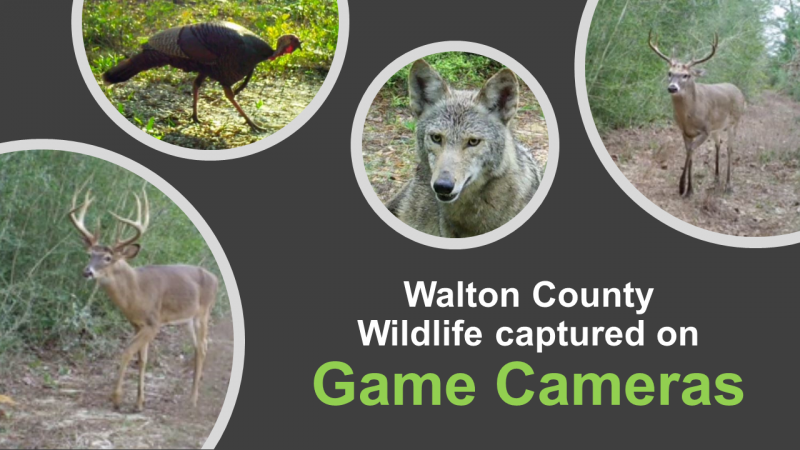 –
–
Mike Goodchild, Walton County Extension Director and Forestry Agent
When your land management plan includes wildlife, it can be frustrating to determine how much impact you are making. Wildlife continuously move and are generally more active and visible when people are not around. One tool available to document the diversity and development of wildlife on your property are game cameras.
Game cameras are also called trail or wildlife cameras. There are a lot of choices when it comes to purchasing a game camera. Most models are activated by motion, but some cameras are triggered by heat sensors. You can also set use a time-lapse mode to take pictures at certain intervals. Picture quality is often determined by the number of megapixels. Detection range of cameras can be anywhere from 10 feet to 120 feet, but longer shots are often blurry. Recovery speeds and trigger speeds are another feature to look at. Determining what you are trying to photograph may help determine the features you want in a game camera. Time stamps let you know when the photo was taken, which is usually a standard feature on these types of cameras. Battery life is also important, with lithium batteries lasting longer than alkaline batteries. Pictures are stored on SD cards, so it is best to buy 32 or 64 GB cards, because photos take a lot of storage space. Infrared camera flashes will not spook wildlife and take better night images than black infrared cameras. No-glow cameras emit no visible light and are good for identifying trespassers.
There are numerous manufacturers of game cameras including Moultrie, Bushnell, Wildgame Innovations, and Stealth to name a few. Prices range from $50 to over a $1000, depending on features. Some cameras are even cellular enabled. They will transmit pictures so you can view them from the comfort of your couch.
Placement of cameras is important. Mount camera on or fence posts that don’t have a lot of vegetation or branches nearby that move in light winds; the movement will cause a lot of pictures of nothing. Mount cameras higher and tilted downwards for large animals and lower for small game.
Below are some YouTube videos made from game camera photos from a local tree farm in Northwest Walton County. The pictures cover a several month span in the same locations. Notice the different stages of antler growth and the color variety of coyotes in our area.
NW Florida Deer video link
Other NW Florida wildlife video
Sources: Wildlife Cameras: A snapshot of what you need to know, Oregon State Extension Service.
- What are the Benefits of Freezer Beef? - August 27, 2021
- Fire Management in a Silvopasture System - March 19, 2021
- Game Cameras for Wildlife Monitoring - October 2, 2020
